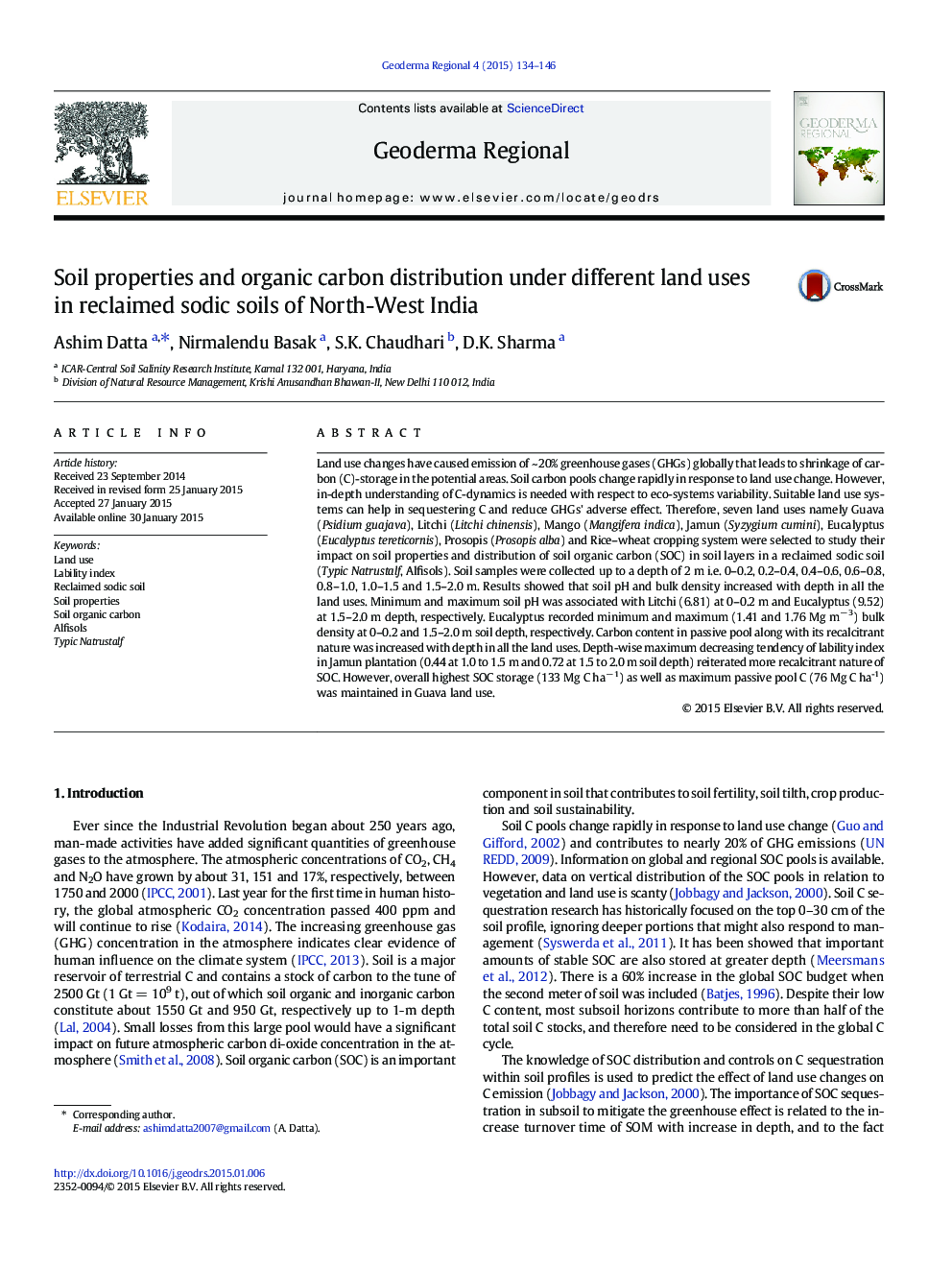| Article ID | Journal | Published Year | Pages | File Type |
|---|---|---|---|---|
| 4480799 | Geoderma Regional | 2015 | 13 Pages |
•SOC pools, TOC stock to 2 m depth of soil were estimated in seven land uses.•Land uses significantly affect soil properties and SOC pools with depth increment.•Highest TOC (133 Mg C ha− 1) and passive pool storage of SOC (76 Mg C ha− 1) were observed under Guava plantation.
Land use changes have caused emission of ~ 20% greenhouse gases (GHGs) globally that leads to shrinkage of carbon (C)-storage in the potential areas. Soil carbon pools change rapidly in response to land use change. However, in-depth understanding of C-dynamics is needed with respect to eco-systems variability. Suitable land use systems can help in sequestering C and reduce GHGs' adverse effect. Therefore, seven land uses namely Guava (Psidium guajava), Litchi (Litchi chinensis), Mango (Mangifera indica), Jamun (Syzygium cumini), Eucalyptus (Eucalyptus tereticornis), Prosopis (Prosopis alba) and Rice–wheat cropping system were selected to study their impact on soil properties and distribution of soil organic carbon (SOC) in soil layers in a reclaimed sodic soil (Typic Natrustalf, Alfisols). Soil samples were collected up to a depth of 2 m i.e. 0–0.2, 0.2–0.4, 0.4–0.6, 0.6–0.8, 0.8–1.0, 1.0–1.5 and 1.5–2.0 m. Results showed that soil pH and bulk density increased with depth in all the land uses. Minimum and maximum soil pH was associated with Litchi (6.81) at 0–0.2 m and Eucalyptus (9.52) at 1.5–2.0 m depth, respectively. Eucalyptus recorded minimum and maximum (1.41 and 1.76 Mg m− 3) bulk density at 0–0.2 and 1.5–2.0 m soil depth, respectively. Carbon content in passive pool along with its recalcitrant nature was increased with depth in all the land uses. Depth-wise maximum decreasing tendency of lability index in Jamun plantation (0.44 at 1.0 to 1.5 m and 0.72 at 1.5 to 2.0 m soil depth) reiterated more recalcitrant nature of SOC. However, overall highest SOC storage (133 Mg C ha− 1) as well as maximum passive pool C (76 Mg C ha-1) was maintained in Guava land use.
